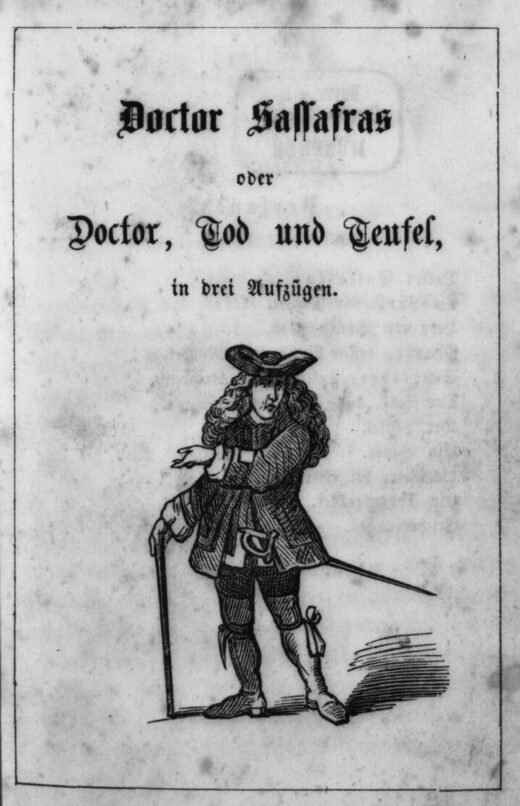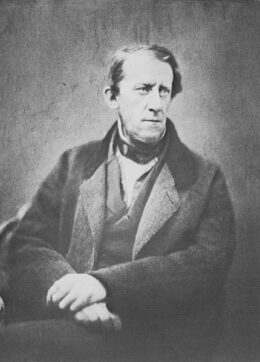
Printed
55 pages
Author(s)
Doctor Sassafras
oder Doctor, Tod und Teufel
Pocci’s Doctor Sassafras features many references to the traditional Faust for puppets. It begins with a farce: just as in Casperl als Porträmaler, Casperl – Doctor Sassafras’ domestic servant – takes his master’s place to “cure” a patient who has eaten twenty-four Knödel (quenelles) by cutting his stomach open. The rest of the play keeps Pocci’s humoristic and satirical tone, but it combines it with the more serious themes of vanity and religion. The influence of Pietism, which informed German sentimentalism since the end of the 18th century, can be felt.
The characters confront death and convert to divine mercy
Doctor Sassafras is pleased to have a client as hypochondriac as Steinreich. This rich and selfish man forbids his niece Marie from continuing to see his secretary Schreiber, whom he dismisses. Steinreich envisions a more beneficial match for his niece. Doctor Sassafras makes a deal with the devil to summon Death. Schreiber then attempts suicide, but a gravedigger saves him, as Death is detained in Sassafras’ enchanted chair. The Devil realises that his pact with Sassafras is detrimental to him and breaks their contract. Death comes fetch the doctor, who turns to God and hopes for His mercy. In the meantime, Steinreich converted: he has become charitable and, most importantly, no longer opposes Marie and Schreiber’s union.
First performance
Münchner Marionettentheater
Publications and translations
Franz Pocci: Lustiges Komödienbüchlein, zweites Bändchen, München, J.J. Lentner, 1861
Franz von Pocci: Lustiges Komödienbüchlein 2, "Editio Monacensia", hrsg.
von Ulrich Dittman und Manfred Nöbel, München, Allitera Verlag, 2007
